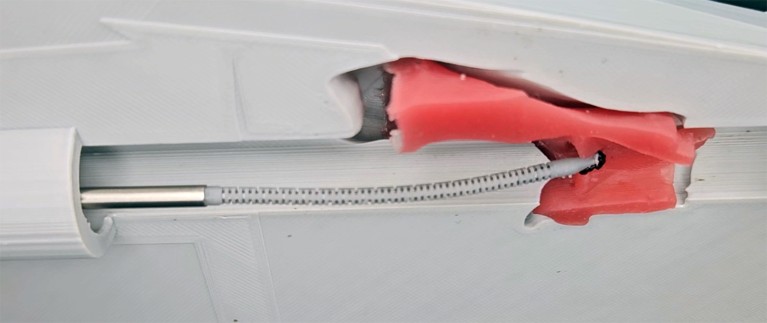Surgery is sometimes necessary to remove growths or cysts from vocal cords.Credit: Garo/Phanie/Science Photo Library
Inspired by the world’s largest land animal, researchers have created and tested what they say is the world’s smallest 3D bioprinter. The device — which sports a 2.7-millimetre-wide printhead at the end of a long, flexible arm that moves like an elephant’s trunk — might one day assist physicians by delivering healing hydrogels after surgery.
In a report published on 29 October in the journal Device1, the researchers proved that the device could be fed through a physician’s surgical scope to deposit hydrogel onto an artificial set of vocal cords. “This is the first time I’ve seen a bioprinter that’s applicable to vocal folds,” says Ibrahim Ozbolat, a biomedical engineer at Pennsylvania State University in University Park. “Bioprinting typically addresses skin defects from the outside. Reaching a defect internally has been a challenge in the field.”
Assisted healing
After undergoing surgery to remove cysts or growths from their vocal cords, people sometimes have difficulty speaking because their vocal folds scar and become stiff. Studies have shown that injecting hydrogels — which can be shaped to mimic the vocal cords’ natural structure and support new tissue as it grows — boosts the healing process2. But surgeons have had a hard time delivering the biomaterials with precision because their view into the throat is limited.

Researchers tested their tiny 3D bioprinter in a surgeon’s training simulator. The device is shown snaking through a surgeon’s ‘scope’ from the left to deposit hydrogel onto artificial vocal cords (pink) on the right.Credit: Swen Groen
Swen Groen, a biomedical engineer at McGill University in Montreal, Canada, wondered whether the natural world might offer a solution to this problem. Perhaps a soft robotic arm that moved like an elephant’s trunk could be miniaturized to aid surgeons without blocking their view?
Groen and his colleagues first designed a prototype that was 8 millimetres in diameter. Then, they shrunk the design to fit more easily through the one-centimetre-wide scope that surgeons use for operations, and demonstrated that it could precisely deliver dollops of hyaluronic-acid-based hydrogels to fill in gaps in artificial vocal folds, which are normally used for surgical training. “Working on the miniaturization has taken the majority of the time,” Groen says.

